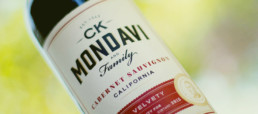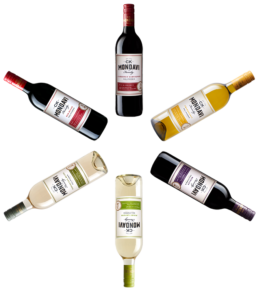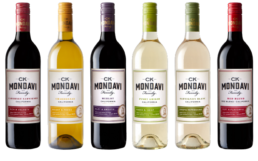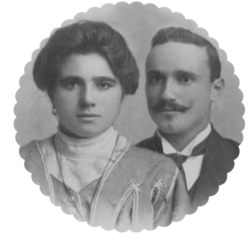
1908: From Sassoferrato to Minnesota.
The young Mondavi couple settle in Minnesota, finding camaraderie among a community of Italian ex-pats. Cesare returns to the iron mines, while Rosa turns their home into a boardinghouse for other immigrant miners. When the time comes to start a family, Cesare decides to leave the dangerous mines. Partnering with another Italian immigrant, he opens a small grocery store. Within a number of years, he and Rosa have four children. The grocery store does well, and Cesare sells his share of the business to buy a saloon.

1908. From Sassoferrato to Minnesota.
The young Mondavi couple settle in Minnesota, finding camaraderie among a community of Italian ex-pats. Cesare returns to the iron mines, while Rosa turns their home into a boardinghouse for other immigrant miners. When the time comes to start a family, Cesare decides to leave the dangerous mines. Partnering with another Italian immigrant, he opens a small grocery store. Within a number of years, he and Rosa have four children. The grocery store does well, and Cesare sells his share of the business to buy a saloon.
1919: Growing grapes during prohibition.
Even under Prohibition, families are permitted to make wine for their own use, a common practice in the Old Country. Wine grapes are scarce in the Midwest, so Cesare travels to California’s Central Valley to buy grapes and ship them back to Minnesota. Arriving in Lodi, he is reminded of home; the climate is so similar to that of Italy’s grape-growing regions. What’s more, the town is ideally located for purchasing and shipping grapes and other fruit. So in 1923, Cesare moves his family to Lodi and the C. Mondavi & Sons wholesale fruit business is born.
1919: Growing grapes during prohibition.
Even under Prohibition, families are permitted to make wine for their own use, a common practice in the Old Country. Wine grapes are scarce in the Midwest, so Cesare travels to California’s Central Valley to buy grapes and ship them back to Minnesota. Arriving in Lodi, he is reminded of home; the climate is so similar to that of Italy’s grape-growing regions. What’s more, the town is ideally located for purchasing and shipping grapes and other fruit. So in 1923, Cesare moves his family to Lodi and the C. Mondavi & Sons wholesale fruit business is born.
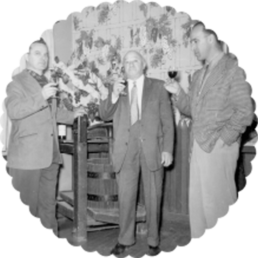
1943: Napa becomes home.
Prohibition is repealed, so Cesare buys a small winery in Napa Valley. Under Cesare and his sons, Robert and Peter, the little winery flourishes. In 1943 Cesare takes a leap of faith, and settles in the Napa Valley. Shortly after, in 1946, CK Mondavi, a new line of affordable, everyday wines is released, the first wines to have the Mondavi name on the label.

1943: Napabecomes home.
Prohibition is repealed, so Cesare buys a small winery in Napa Valley. Under Cesare and his sons, Robert and Peter, the little winery flourishes. In 1943 Cesare takes a leap of faith, and settles in the Napa Valley. Shortly after, in 1946, CK Mondavi, a new line of affordable, everyday wines is released, the first wines to have the Mondavi name on the label.
1959: A new family vintage.
In 1959, Cesare passes away, leaving the winery to Robert and Peter. When Robert decides to strike out on his own, Peter takes over and continues to oversee day-to-day operations. Under Peter’s stewardship, the winery sets milestones for innovations – including cold fermentation for white wines, and sterile filtration techniques – that produce crisper, livelier wines. In light of his many contributions, Peter is named a “Living Legend” by the Napa Valley Vintners Association in 1995. Remarkably, Peter continues to be the heart and soul of the winery, coming into the office daily, right up until six months before his death at age 101 in 2016.
1959: A newfamily vintage.
In 1959, Cesare passes away, leaving the winery to Robert and Peter. When Robert decides to strike out on his own, Peter takes over and continues to oversee day-to-day operations. Under Peter’s stewardship, the winery sets milestones for innovations – including cold fermentation for white wines, and sterile filtration techniques – that produce crisper, livelier wines. In light of his many contributions, Peter is named a “Living Legend” by the Napa Valley Vintners Association in 1995. Remarkably, Peter continues to be the heart and soul of the winery, coming into the office daily, until six months before his death at age 101 in 2016.
